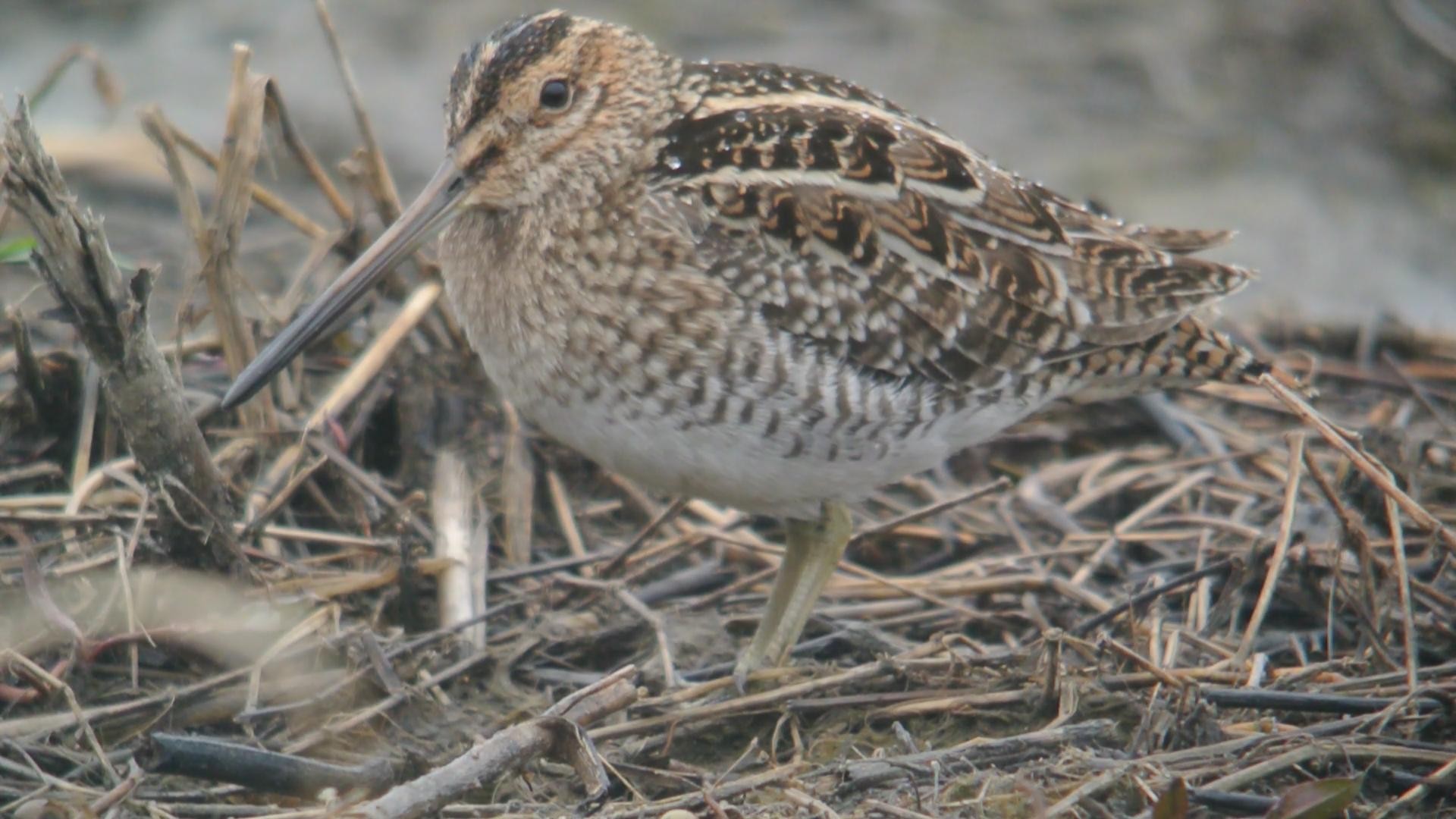Wilson's Snipe
A species of Typical Snipes and Woodcock-snipes Scientific name : Gallinago delicata Genus : Typical Snipes and Woodcock-snipes
Wilson's Snipe, A species of Typical Snipes and Woodcock-snipes
Botanical name: Gallinago delicata
Genus: Typical Snipes and Woodcock-snipes
Content
Description People often ask General Info
 Photo By Andy Reago & Chrissy McClarren , used under CC-BY-2.0 /Cropped and compressed from original
Photo By Andy Reago & Chrissy McClarren , used under CC-BY-2.0 /Cropped and compressed from original Description
Adults are 23–28 cm (9.1–11.0 in) in length with a 39–45 cm (15–18 in) wingspan. Weight ranges from 2.8-5.2 oz (79-146 g). They have short greenish-grey legs and a very long straight dark bill. The body is mottled brown on top and pale underneath. They have a dark stripe through the eye, with light stripes above and below it. The wings are pointed. 
Size
25 - 28 cm
Colors
Brown
Gray
White
Life Expectancy
6 years
Nest Placement
Ground
Clutch Size
2 - 4 eggs
Number of Broods
18 - 20 days
Feeding Habits
Wilson's Snipe's diet consists mainly of insect larvae such as flies, beetles, and others, plus snails, crustaceans, and worms. They forage by probing wet soil with their flexible bills, and they can also consume small vertebrates and some plant material, though infrequently.
Habitat
Wilson's Snipe are commonly found in a variety of moist, marshy environments such as marshes, bogs, and wet meadows. These birds prefer areas at low altitudes with a climate suitable for wetlands. They thrive amidst vegetation like sedges, rushes, and cattails, but avoid overly tall, dense growth, seeking patches for concealment and predator monitoring. In the western regions, wilson's Snipe inhabit wet pastures and agricultural lands, while in southern areas, they are seasonal guests in managed rice and sugarcane fields during winter.
Nest Behavior
The female wilson's Snipe meticulously constructs the nest and lays eggs in a scrape, enhancing the nest with grasses with each egg. Egg-laying is followed by both parents caring for the eggs and young, ensuring their successful development.
Nest Characteristics
Wilson's Snipe typically chooses a ground nest site near water, often on a hummock and concealed by vegetation such as sedges or moss. The nest, built by the female, is a shallow scrape with a diameter of up to 7 inches and a depth of 3 inches, lined with coarse and fine grasses.
Dite type
Aquatic invertebrate eater
People often ask
General Info
Feeding Habits
Bird food type
Sounds
Call
Recording location: United States
Song
Recording location: United States
Winnow
Recording location: United States
Behavior
Wilson's Snipe typically rests during the day, becoming active to forage at dusk and dawn in wet habitats like marshes and bogs, using its bill's sensitive tip to detect prey. Despite a portly appearance, wilson's Snipe are agile fliers capable of dynamic, zigzagging escapes at over 60 mph. Their breeding displays are distinctive, with the 'winnowing' sound produced by air rushing over tail feathers during territorial dives. Both sexes winnow, with males also using it to defend territory. Wilson's Snipe might feign injury to protect nests, convincingly acting to divert predators.
Species Status
Not globally threatened.

 Photo By Andy Reago & Chrissy McClarren , used under CC-BY-2.0 /Cropped and compressed from original
Photo By Andy Reago & Chrissy McClarren , used under CC-BY-2.0 /Cropped and compressed from original